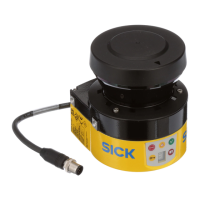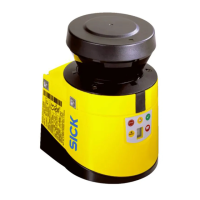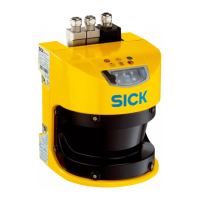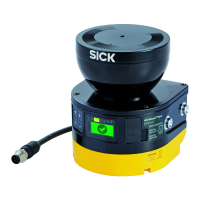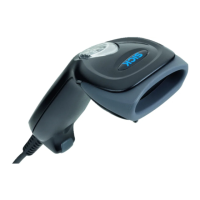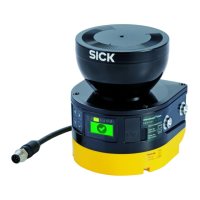Chapter 3 Operating instructions
S300
16 © SICK AG • Industrial Safety Systems • Germany • All rights reserved 8010948/YY96/2016-02-17
Subject to change without notice
Product description
3.2 Function
T
he S300 safety laser scanner operates correctly as a protective device only if the
following conditions are met:
The control of the machine, system or vehicle must be electrical.
It must be possible to transfer the dangerous state of the machine, the system or the
vehicle to a safe state at any time using the OSSDs on the S300, i.e. before a person
has reached the hazardous point or hazardous area.
Or:
It must be possible to transfer the dangerous state of the machine, the system or the
vehicle to a safe state at any time using the OSSDs on a safety controller connected to
the S300 or to a further safety laser scanner.
The S300 must be mounted and configured such that it detects objects as they enter
the hazardous area (see chapter 5 “Mounting” on page 56 and chapter 9 “Commis-
sioning” on page 99).
The safety laser scanner’s optical path must always remain clear and is not allowed to
be covered by transparent objects such as protective windows, Plexiglas, lenses etc. The
safety laser scanner’s protective function can only be ensured if the contamination mea-
surement function is not bypassed by such measures.
3.2.1 Principle of operation
The S300 is an optical sensor that scans its surroundings in two dimensions using infrared
laser beams. It is used to monitor hazardous areas on machines or vehicles.
The S300 works on the principle of time-of-flight measurement. It sends out very short
pulses of light (send pulses). At the same time an “electronic stopwatch” is started. When
the light hits an object, it is reflected and received by the safety laser scanner (receive pul-
ses). From the time between sending and reception (t) the S300 calculates the distance
to the object.
time-of-flight measurement
by the S300
t
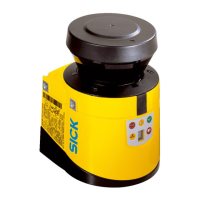
